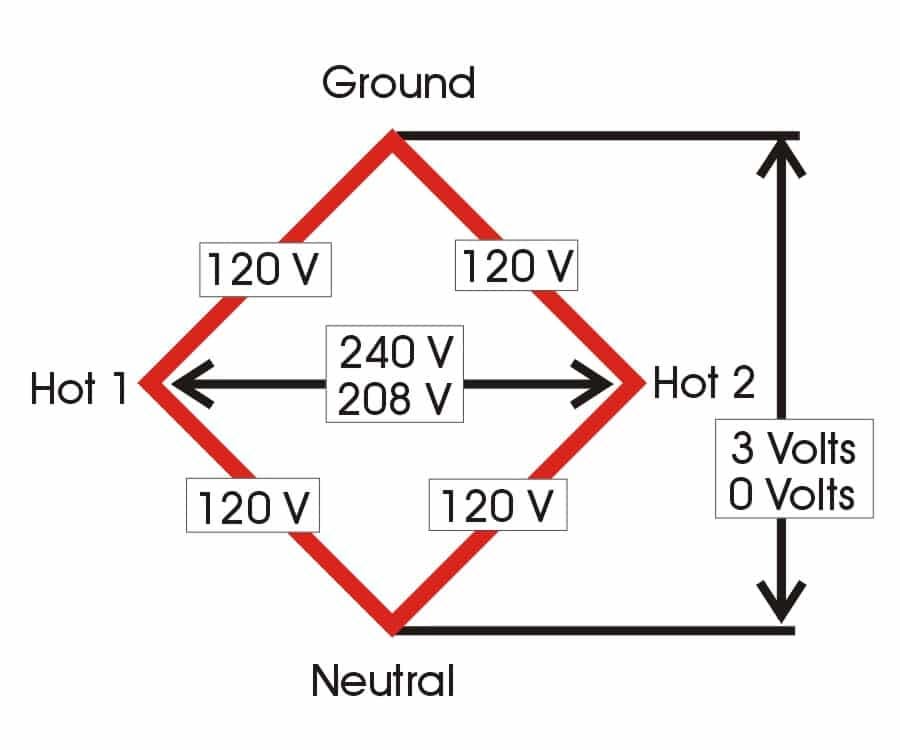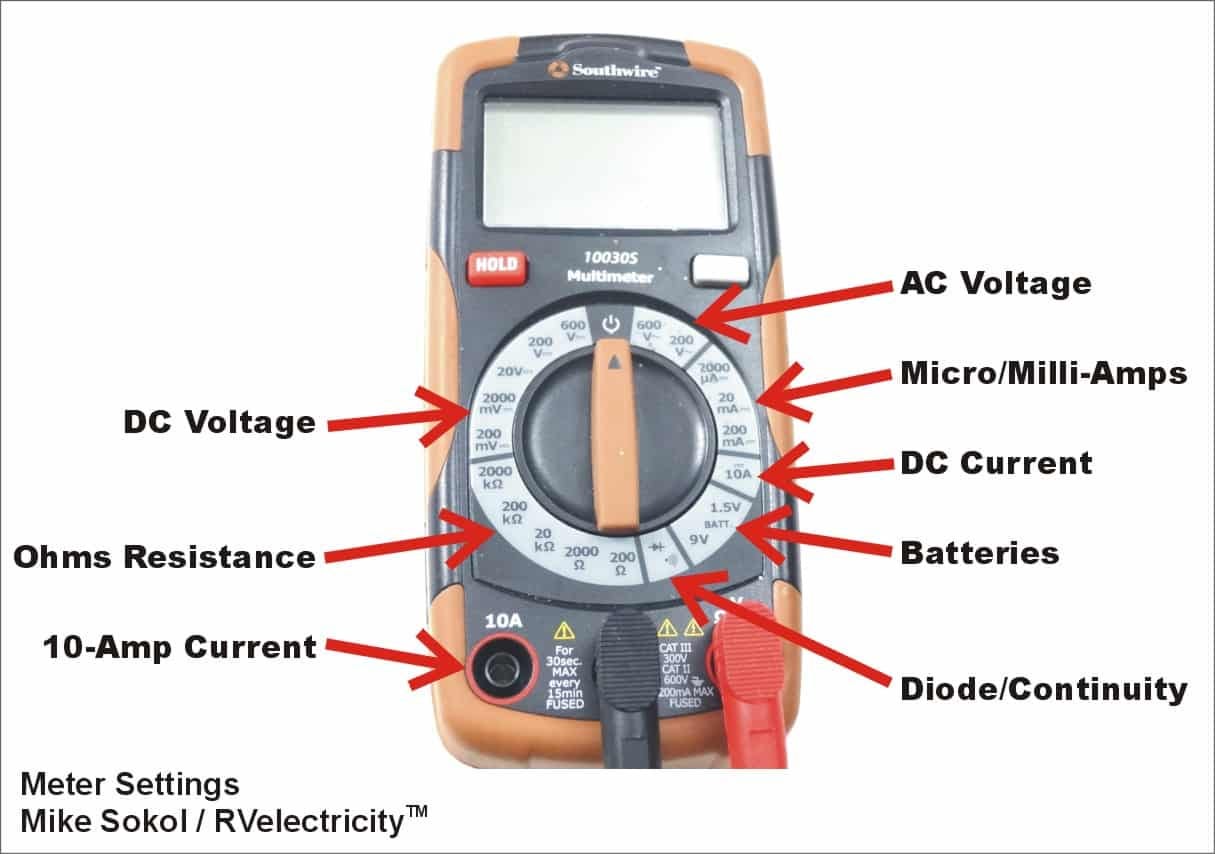Why you need a multimeter for your RV
You can buy a basic 3-meter kit for around $40. Learning how to use it can save you hundreds of dollars in troubleshooting costs.
Dear Readers,
I’m in the middle of creating a new training video about using a multimeter for RV electrical system testing. One of the topics is all the things you can test in your RV with even a very basic digital multimeter. I’ll be publishing those videos and articles on meter usage soon, but first you need to get yourself a basic digital multimeter.
Testing AC pedestal voltage
Use a meter to test a pedestal for proper voltage and polarity before plugging your RV into it. It’s actually pretty easy. Here’s the diagram I made years ago that shows all the voltage readings for a correctly wired pedestal.
If the voltage reads much below 105 volts or above 128 volts, then there’s a problem with the campground electrical system that could damage your RV or even create a hot-skin voltage condition. And HERE is a video I made a while back that shows how to test a campground pedestal for proper voltage.
Testing DC battery voltage
Few things are more disheartening than waking up in the middle of the night with a dead house battery. Any digital multimeter will be more accurate than the simple 4-bar battery gauge in many RVs. But you will need to know what kind of batteries you have (such as flooded lead acid, AGM or lithium).
Then find a SoC (State of Charge) chart like this one that shows battery SoC at different voltages. This is also a great way to determine if your converter/charger is working. When you’re plugged into shore power you should measure between 13.5 and 14.5 volts on your battery terminals, depending on battery chemistry. If you read in the 12 volts range, then your converter isn’t charging and you’ll soon have dead batteries.
Finding a dead fuse
All these meters have a continuity setting, which will beep when there’s a low-resistance connection across the probes. By pulling the fuse and placing the probes across the fuse contacts, if the meter “beeps” then the fuse is okay.
If the meter doesn’t “beep” then the fuse is blown. It’s also possible to check the fuse in-circuit. With the power and the load on, set the meter to 20-volts DC. If you measure 12 volts across the fuse then it’s opened up and not passing current. But if it reads close to 0 volts (maybe 0.5 volts DC) then the fuse is good and is supplying current to the load.
Lots more things to test
The list of things you can test with a basic digital multimeter is nearly endless. You can measure hot-skin voltage, find a dead GFCI, troubleshoot an open contact in a generator transfer switch, check AA and 9-volt batteries for juice, and a whole lot more. I won’t go anywhere without my trusty multimeter.
But you need to learn how your meter works when you’re not under pressure. So get a multimeter and read my articles and watch my videos about how to use it. And then when something in your RV stops working you can pull out your meter and start troubleshooting.
Get a 3-meter kit for less than $40
You don’t need an expensive meter to do these tests. In fact, Southwire makes a 3-meter kit with a multimeter, 3-light outlet tester, and Non-Contact Voltage Tester for around $40. It’s a real deal that could save you troubleshooting money as well as save your life. Get one at your favorite Big Box Store or on Amazon HERE.
Let’s play safe out there…. Mike








We have a digital readout plug that we use at the campsite before plugging in. It shows voltage and whether the pedestal is wired correctly. My only complaint is when I plug the tester into my 30 amp converter plug it's always upside down. I'm getting too old for this 'bending over' stuff. :)